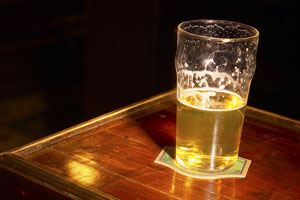A year after enacting a social host ordinance enforceable in
unincorporated areas of Santa Clara County, supervisors are
considering updating the law with stiffer penalties in order to
curb underage alcohol use.
A year after enacting a social host ordinance enforceable in unincorporated areas of Santa Clara County, supervisors are considering updating the law with stiffer penalties in order to curb underage alcohol use.
The law allows sheriff’s deputies to issue citations to adults who are responsible for gatherings involving underage alcohol consumption on their property, even if those adults are not present. First adopted in Sept. 2008, a one-year trial period did not net any citations or warnings.
Later this month, the supervisors will consider an update that adds “more teeth” to the law by imposing hefty fines on violators, according to Supervisor Don Gage. Adult property owners or hosts who are found guilty of providing alcohol to minors at private parties will be fined $350 for the first offense, and $700 for each repeat violation.
Eight cities in Santa Clara County, including Morgan Hill and Gilroy, have their own social host ordinances that regulate underage drinking parties in the city limits. Residents in unincorporated areas who think they are safe from police when they hold loud gatherings where intoxicated young people bother their neighbors will now have to shape up or pay up, Gage said.
“This will keep people from moving from the city out to the county to have those parties, because they have rules out there now,” Gage said.
Although some of the local municipal social host ordinances have provisions holding landlords or property managers responsible for underage drinking in their apartments or rental homes, the county will not enact such a rule. The county ordinance will only cite the parents or other adults who are directly responsible for juvenile conviviality, because almost all disturbances involving underage drinking reported by deputies are at single-family residences, according to a staff report that will be presented at the Jan. 26 board meeting.
From Jan. 1 to June 30, 2009, the sheriff’s office responded to 200 service calls for disturbances emanating from private parties. Of those, only 11 were juvenile parties where no adults were on the property, according to the staff report. No social host violations were issued, and most of the cases ended in “no report.”
The ordinance will not substantially cost the county money, because it will only be enforced when deputies respond to complaints of noise or other disturbances at parties.
The city of Morgan Hill enacted its social host ordinance in 2007. More restrictive than the county’s, it allows penalties for landlords or property managers in rental dwellings where underage people have been drinking. Plus, the maximum fine for a third offense is $1,000. A first violation can lead to a $250 fine, and the second offense can cost $500.
In both the city and county ordinances, the parents or homeowners responsible for underage drinking parties can be cited even if they are not home at the time of the party.
Morgan Hill police issued five citations for social host violations in 2008, and five more in 2009, according to Patti Yinger, support services manager with MHPD. None of those cited were repeat offenders.
These numbers alone do not indicate a plague of underage drinking, but Cmdr. Joe Sampson said that might be because of authorities’ decision to start prosecuting adults who allow minors to imbibe alcohol on their property, or in their presence. He said police proposed the social host rule as a widespread response to recurring loud parties, especially during the summer, in which crowds of juveniles were drinking. Some of those incidents even resulted in “minor injuries that could have been worse,” Sampson said.
“Once the ordinance went into place, we started to see that people were more cognizant that if police responded, even if they weren’t there, they could be held responsible,” Sampson said.
A survey of 150 Morgan Hill Unified School students ages 14 to 19, conducted in 2007, indicated that 85 percent of local teens have drunk alcohol at least once.
Each year about 5,000 Americans younger than 21, the legal drinking age, die as a result of alcohol consumption leading to accidents, homicides and suicides, according to the National Institute on Alcohol Abuse and Alcoholism.
In Gilroy, 15-year-old Sarah Botill died Dec. 5, 2009, after a night of drinking at a slumber party. Authorities have not confirmed that the beer and vodka she consumed the previous night caused her death, but witnesses and police said she was intoxicated and had difficulty breathing before an adult at the home called 911.
Officials familiar with that case said that the homeowner, former Gilroy councilman Roland Velasco, would not be subject to a social host violation because he did not know Botill and her friends were drinking.
However, numerous state laws already on the books regulate underage drinking. For example, it is a crime for an adult to supply an underage person with alcohol. And if someone younger than 18 who drives a vehicle while intoxicated and causes a traffic accident, the adult who supplied alcohol to the driver can be prosecuted.
“(Underage drinking) is a very big problem, all over the place. It’s a social problem that’s been around for a long time,” Gage said.









